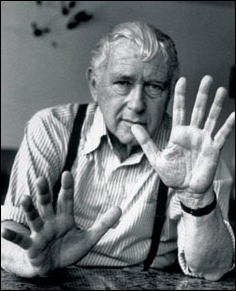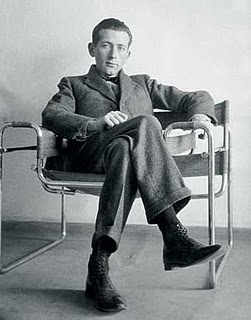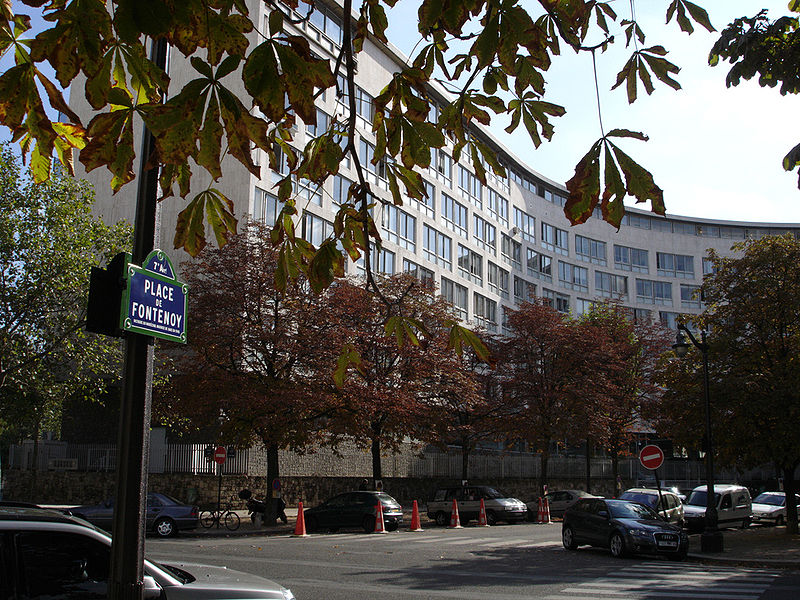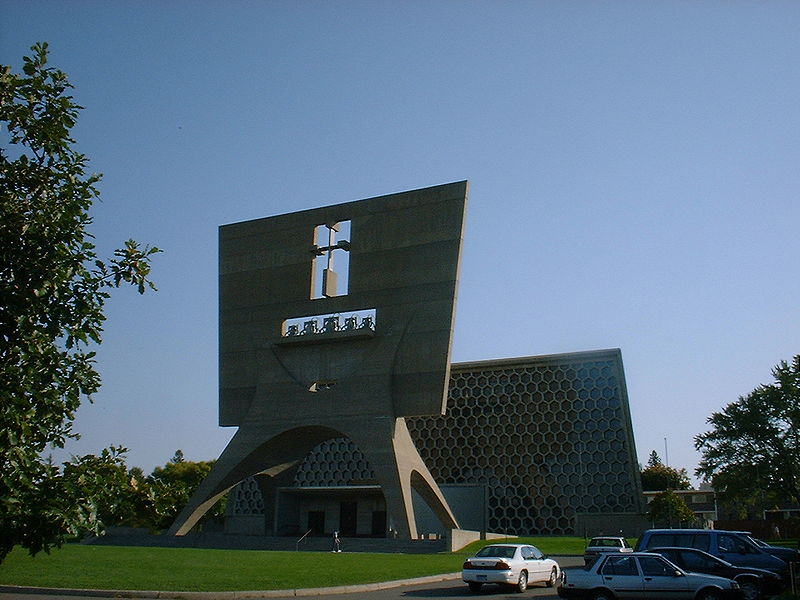<Back to Index>
- Mathematician Armand Borel, 1923
- Architect Marcel Lajos Breuer, 1902
- Dictator of Argentina Pedro Eugenio Aramburu Cilveti, 1903
PAGE SPONSOR


Marcel Lajos Breuer (21 May 1902 Pécs, Hungary – 1 July 1981 New York City), architect and furniture designer, was an influential Hungarian born modernist of Jewish descent. One of the masters of Modernism, Breuer displayed interest in modular construction and simple forms.
Known to his friends and associates as Lajkó, Breuer studied and taught at the Bauhaus in the 1920s. The Bauhaus curriculum stressed the simultaneous education of its students in elements of visual art, craft and the technology of industrial production. Breuer was eventually appointed to a teaching position as head of the school's carpentry workshop. He later practiced in Berlin, designing houses and commercial spaces. In the 1920s and 1930s, Breuer pioneered the design of tubular steel furniture. Later in his career he would also turn his attention to the creation of innovative and experimental wooden furniture.
Perhaps the most widely recognized of Breuer's early designs was the first bent tubular steel chair, later known as the Wassily Chair, designed in 1925 and was inspired, in part, by the curved tubular steel handlebars on Breuer's Adler bicycle. Despite the widespread popular belief that the chair was designed for painter Wassily Kandinsky, Breuer's colleague on the Bauhaus faculty, it was not; Kandinsky admired Breuer's finished chair design, and only then did Breuer make an additional copy for Kandinsky's use in his home. When the chair was re-released in the 1960s, it was designated "Wassily" by its Italian manufacturer, who had learned that Kandinsky had been the recipient of one of the earliest post-prototype units.
In the 1930s, due to the rise of the Nazi party in Germany, Breuer relocated to London. While in London, Breuer was employed by Jack Pritchard at the Isokon company; one of the earliest introducers of modern design to the United Kingdom. Breuer designed his Long Chair as well as experimenting with bent and formed plywood. Between 1935 and 1937 he worked in practice with the English Modernist F.R.S. Yorke with whom he designed a number of houses. Breuer eventually ended up in the United States. He taught at Harvard's architecture school, working with students such as Philip Johnson, Paul Rudolph and I.M. Pei who later became well known U.S. architects. (At one point Johnson called Breuer "a peasant mannerist".) At the same time, Breuer worked with old friend and Bauhaus colleague Walter Gropius, also at Harvard, on the design of several houses in the Boston area.
Breuer dissolved his partnership with Gropius in May 1941 and established his own firm in New York. The Geller House I
of 1945 is the first to employ Breuer's concept of the 'binuclear'
house, with separate wings for the bedrooms and for the living / dining
/ kitchen area, separated by an entry hall, and with the distinctive
'butterfly' roof (two opposing roof surfaces sloping towards the
middle, centrally drained) that became part of the popular modernist
style vocabulary. A demonstration house set up in the MOMA garden in 1949 caused a new flurry of interest in the architect's work, and an appreciation written by Peter Blake. When the show was over, the "House in the Garden" was dismantled and
barged up the Hudson River for reassembly on the Rockefeller property
in Pocantico Hills near Sleepy Hollow. The 1953 commission for UNESCO headquarters
in Paris was a turning point for Breuer: a return to Europe, a return
to larger projects after years of only residential commissions, and the
beginning of Breuer's adoption of concrete as his primary medium. He became known as one of the leading practitioners of Brutalism,
with an increasingly curvy, sculptural, personal idiom. Windows were
often set in soft, pillowy depressions rather than sharp, angular
recesses. Many architects remarked at his ability to make concrete
appear "soft". Between 1963 and 1964, Breuer began work on what is perhaps his best known project, the Whitney Museum of American Art,
in New York City. He also established a Parisian office with the name
"Marcel Breuer Architecte," from which he could better orchestrate his
European projects. Also during this time, Herbert Beckhard, Murray
Emslie, Hamilton Smith, and Robert F. Gatje became partners in Marcel
Breuer and Associates. When Murray Emslie left a year later, he was
replaced by Tician Papachristou, who had been recommended by Breuer's
former student, I.M. Pei. Breuer is sometimes incorrectly credited, or blamed, for the former Pan Am Building (now the MetLife Building), an unpopular high rise in New York City. The Pan Am was actually designed by Emery Roth & Sons with the assistance of Walter Gropius and Pietro Belluschi. Breuer's name was associated with the site because in 1969 Breuer developed a 30-story proposed skyscraper over Grand Central Terminal, called "Grand Central Tower", which Ada Louise Huxtable called "a gargantuan tower of aggressive vulgarity," and which became a cause celebre. Breuer's reputation was damaged, but the legal fallout improved the climate for landmark building preservation in New York City and across the United States. Breuer's Grand Central Tower set the foundations for his skyscraper idea. In 1966, the Cleveland Museum of Art needed
to expand, one of its trustees was Brock Weir of Cleveland Trust Bank.
Weir visited New York City scouting bank headquarter designs for a new
Cleveland Trust Tower. Weir saw the proposed Grand Central Tower
idea and got Breuer to design the Cleveland Trust Tower. In 1968, the
Cleveland Trust Tower plan was revealed. It was to have two twin towers
flanking the bank's 1908 rotunda. Construction began in 1969 and was
completed in 1971. The second tower was to begin construction in 1971
but due to plans at Cleveland Trust, the second tower was not erected,
but the tower is ready for expansion if needed. The Tower was renamed
the AT Tower or the Ameritrust Tower after Cleveland Trust's name change in 1980. The Ameritrust has been vacant since the 1992 merger of Ameritrust and Society Bank. In 2005, Cuyahoga County commissioners bought the building for $22,000,000 with plans to use the site for a
new county administration center. The commissioners decided in 2007 to
demolish the Ameritrust Tower; however, many preservation groups
strongly opposed demolition. In October 2007, the commissioners voted
to sell the tower and site to a developer. On April 17, 2008, the
K&D Group purchased the site with plans to preserve the tower as
part of a $133 million hotel/condo complex.
![]()


